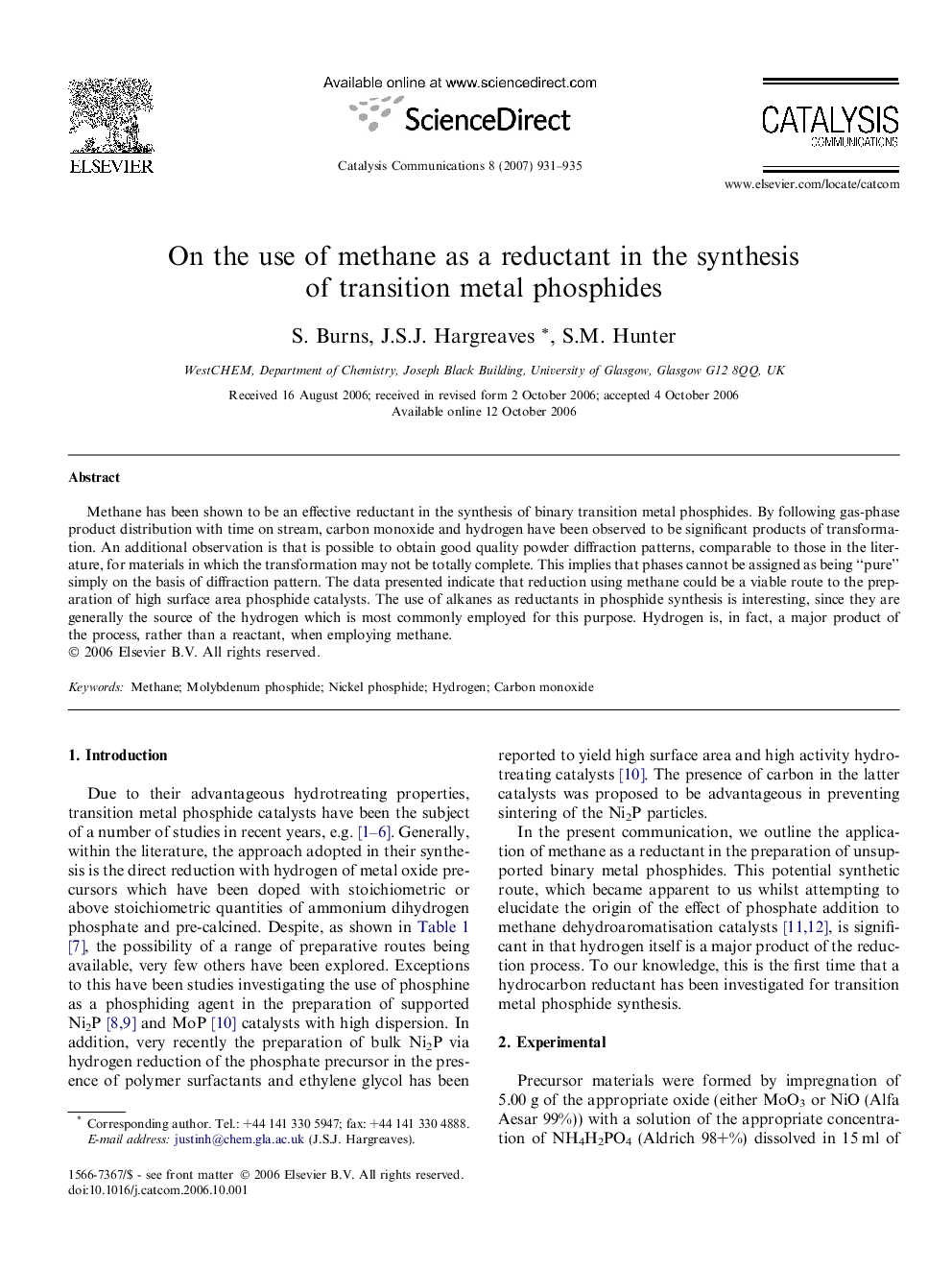| Article ID | Journal | Published Year | Pages | File Type |
|---|---|---|---|---|
| 52756 | Catalysis Communications | 2007 | 5 Pages |
Methane has been shown to be an effective reductant in the synthesis of binary transition metal phosphides. By following gas-phase product distribution with time on stream, carbon monoxide and hydrogen have been observed to be significant products of transformation. An additional observation is that is possible to obtain good quality powder diffraction patterns, comparable to those in the literature, for materials in which the transformation may not be totally complete. This implies that phases cannot be assigned as being “pure” simply on the basis of diffraction pattern. The data presented indicate that reduction using methane could be a viable route to the preparation of high surface area phosphide catalysts. The use of alkanes as reductants in phosphide synthesis is interesting, since they are generally the source of the hydrogen which is most commonly employed for this purpose. Hydrogen is, in fact, a major product of the process, rather than a reactant, when employing methane.
